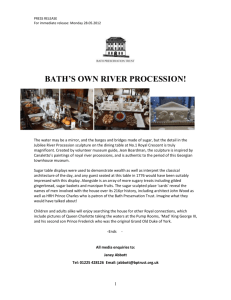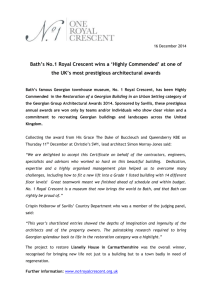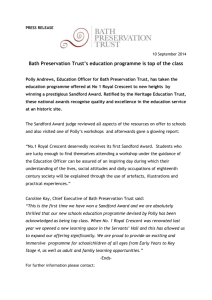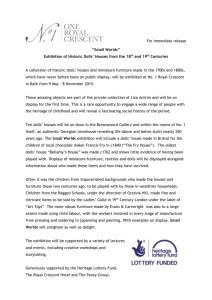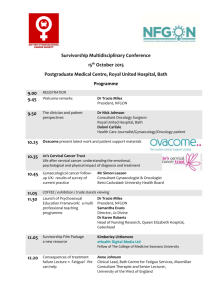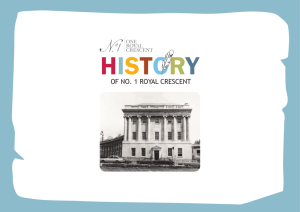Portrait of a Lady? Exhibition opens on 16 May 2014
advertisement
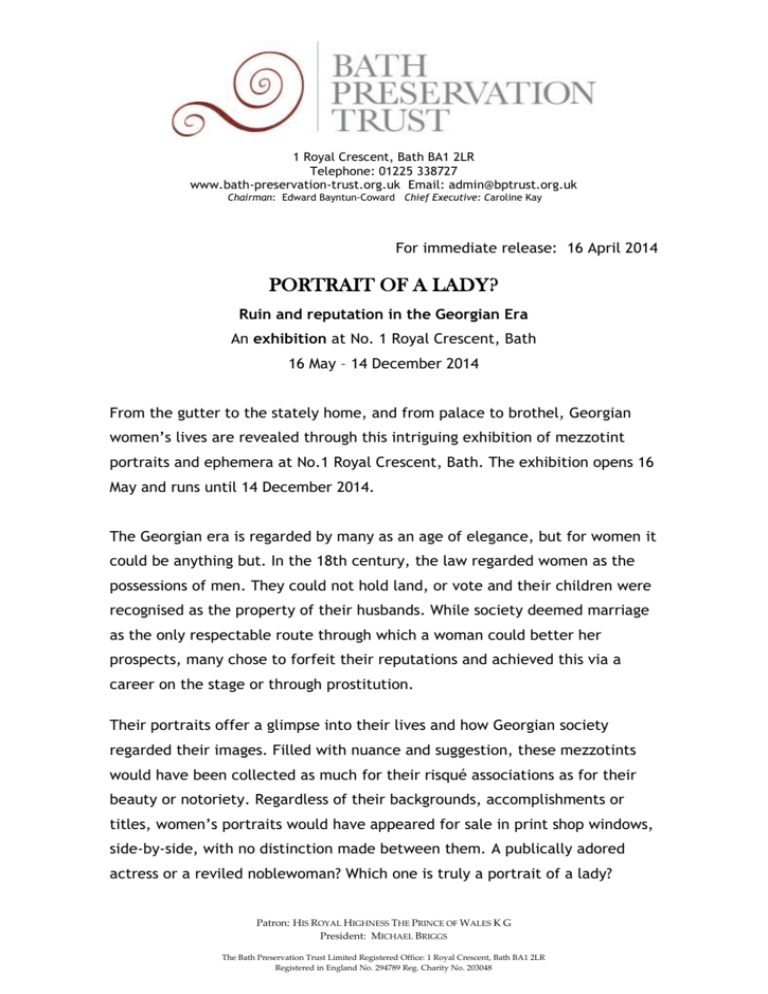
1 Royal Crescent, Bath BA1 2LR Telephone: 01225 338727 www.bath-preservation-trust.org.uk Email: admin@bptrust.org.uk Chairman: Edward Bayntun-Coward Chief Executive: Caroline Kay For immediate release: 16 April 2014 PORTRAIT OF A LADY? Ruin and reputation in the Georgian Era An exhibition at No. 1 Royal Crescent, Bath 16 May – 14 December 2014 From the gutter to the stately home, and from palace to brothel, Georgian women’s lives are revealed through this intriguing exhibition of mezzotint portraits and ephemera at No.1 Royal Crescent, Bath. The exhibition opens 16 May and runs until 14 December 2014. The Georgian era is regarded by many as an age of elegance, but for women it could be anything but. In the 18th century, the law regarded women as the possessions of men. They could not hold land, or vote and their children were recognised as the property of their husbands. While society deemed marriage as the only respectable route through which a woman could better her prospects, many chose to forfeit their reputations and achieved this via a career on the stage or through prostitution. Their portraits offer a glimpse into their lives and how Georgian society regarded their images. Filled with nuance and suggestion, these mezzotints would have been collected as much for their risqué associations as for their beauty or notoriety. Regardless of their backgrounds, accomplishments or titles, women’s portraits would have appeared for sale in print shop windows, side-by-side, with no distinction made between them. A publically adored actress or a reviled noblewoman? Which one is truly a portrait of a lady? Patron: HIS ROYAL HIGHNESS THE PRINCE OF WALES K G President: MICHAEL BRIGGS The Bath Preservation Trust Limited Registered Office: 1 Royal Crescent, Bath BA1 2LR Registered in England No. 294789 Reg. Charity No. 203048 Once committed to paper, a woman’s portrait could be used by anyone for any purpose. It could be bought or sold, displayed, defaced, derided or adored. It entered the public domain – much like an actress or a fallen woman. As women were for possessing, so too were their images. Historian Hallie Rubenhold said: “I am delighted to be working with the Bath Preservation Trust on this exciting project. This exhibition reveals the reality of women’s lives in the Georgian era. For me, it is important that we tell these stories about darker aspects of our past which can contrast dramatically with often misleading public perceptions of the period.” Head of Museums, Tom Boden said: “This is our first major exhibition in the new Brownsword Gallery at the recently redeveloped No. 1 Royal Crescent and we are thrilled to be working with renowned historian Hallie Rubenhold who is curating the show. The exhibition will uncover stories about women from all walks of life during the Georgian period and at the same time will celebrate the art of the mezzotint.” During the 18th century, it is suggested that one in five women were engaged in prostitution at some point during their lives. Some of the most celebrated figures of 18th century society, such as Kitty Fisher, began their careers in prostitution before being taken into ‘keeping’ by a wealthy client and eventually marrying. Noble women such as Georgiana, Duchess of Devonshire and Elizabeth Chudleigh were also not immune from the taint of scandal and could find their characters defamed beside those of actresses and courtesans. This exhibition is supported by the Heritage Lottery Fund and by George Bayntun. -Ends- For further information please contact: Janey Abbott, Communications Officer, Bath Preservation Trust Telephone: 01225 338727 Email: jabbott@bptrust.org.uk www.no1royalcrescent.org.uk Notes for editors No.1 Royal Crescent enables people to explore the recreated historic interiors of a late 18th century Bath Town House of distinction. Built on the realistic presentation of authentic historic objects in period room settings, No.1 deploys a wide range of interpretation to bring the house to life for all visitors. Following a major redevelopment, the museum re-opened in June 2013 and now has twice as many historic rooms as well as a dedicated exhibition gallery – the Brownsword Gallery. The museum receives approximately 60,000 visitors per year and is currently ranked by Trip Advisor as the second museum in Bath, behind the Roman Baths. Entry to the exhibition is free with normal admission to the museum, or £4.00 (no concessions) for visitors to the exhibition only.
